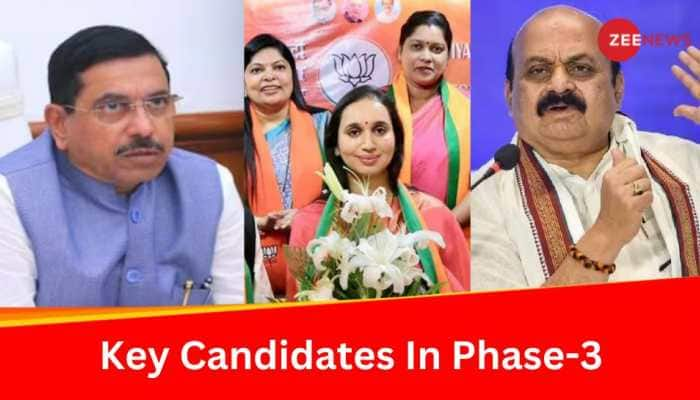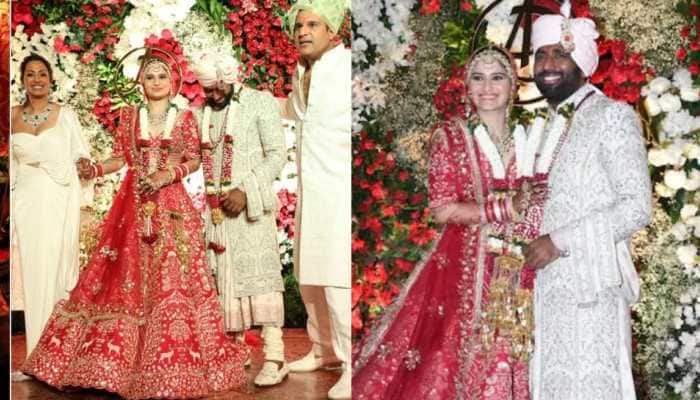The Story Of Janata Dal-United: Despite George Fernandes, Sharad Yadav Or Lalan Singh, How A 'Ruthless' Nitish Kumar Always Dominated His Party
JDU's political journey encapsulates the essence of a saga marked by resilience, strategic manoeuvring, and the unwavering influence of a singular force – Nitish Kumar.
- Janata Dal-United, Story Of JDU, JDU History & Formation, George Fernandes, Sharad Yadav, Lalan Singh, Nitish Kumar, Bihar
Trending Photos
)
NEW DELHI: In the intricate tapestry of Indian politics, the Janata Dal United (JDU) has always been a fascinating narrative, woven with the threads of leadership transitions, ideological shifts, and the indomitable presence of Bihar Chief Minister Nitish Kumar. JDU's political journey encapsulates the essence of a saga marked by resilience, strategic manoeuvring, and the unwavering influence of a singular force – Nitish Kumar.
As we embark on this journey through the corridors of JDU's history, the names of prominent figures like George Fernandes, Sharad Yadav, and Lalan Singh emerge, each leaving an indelible mark on the party's trajectory. Yet, amidst the evolving leadership landscape, Nitish Kumar's unyielding control has remained a constant, earning him the moniker of a 'ruthless' political tactician. This story unfolds against the backdrop of Bihar's dynamic political landscape, where power struggles, alliances, and ideological intricacies shape the destiny of JDU.
The Origins: JDU's Inception And Early Leadership Dynamics
Founded on October 30, 2003, through the merger of the Samata Party and the Lok Shakti Janata Dal, JDU had prominent figures like George Fernandes, Sharad Yadav, and Nitish Kumar at its helm. Despite the initial camaraderie, political differences and health issues led to Fernandes distancing himself from the party. Sharad Yadav served as the founding president until 2016, but as his relationship with Nitish Kumar soured, the latter solidified his control.
Shifts In Leadership: Nitish Kumar's Rise
In 2016, with differences widening between Sharad Yadav and Nitish Kumar, the latter assumed the role of JDU president. This marked a turning point, with Sharad Yadav eventually parting ways and aligning with Lalu Yadav's RJD. As Nitish Kumar strengthened his grip on the party, discussions arose about expanding JDU's influence nationally, leading to the short-lived presidency of RCP Singh from 2020 to 2021.
Return Of Nitish Kumar: A Continuum Of Control
Facing a disconnect with RCP Singh, Nitish Kumar appointed his close confidant Lalan Singh as JDU president in July 2021. Despite these changes, political analysts argue that Nitish Kumar maintained a firm grip on the party's decisions, closely monitoring and sometimes vetoing choices. The party's trajectory, it seemed, was inexorably tied to Nitish Kumar's influence.
Current Scenario: Nitish Kumar Resumes JDU Leadership
In a recent twist, Bihar Chief Minister Nitish Kumar once again assumed the presidency of JDU, following Lalan Singh's resignation. The party, synonymous with Nitish Kumar's leadership, witnesses the seasoned politician steering it through Bihar's intricate political landscape.
Conclusion: Nitish Kumar's Domination Continues
The story of JDU is one marked by the relentless influence of Nitish Kumar. As he finds himself once again at the forefront, guiding the party through Bihar's political intricacies, the saying ''JDU means Nitish Kumar'' stands true. This tale encapsulates the enduring saga of a political tactician who has, time and again, asserted his dominance over the Janata Dal United.







)
)
)
)
)
)
)
)
)
)
